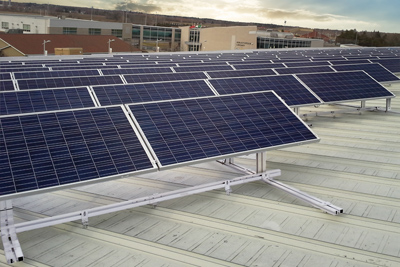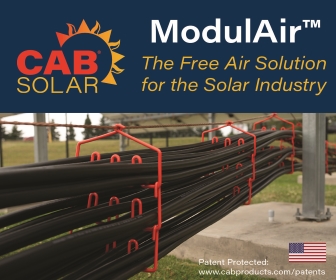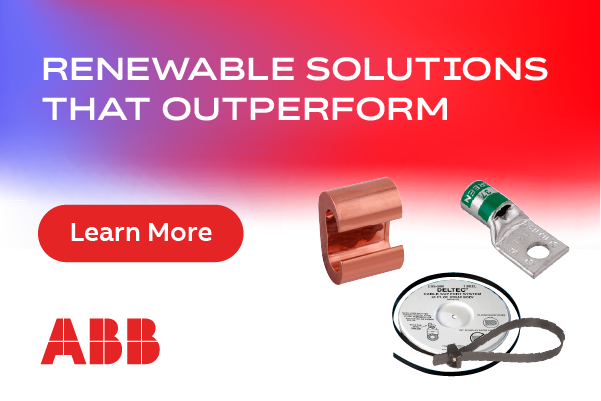Making Dollars Count: 10 solar racking tips
 It’s been said that you get what you pay for. If that’s true for most items, including technology, than the same might be said for solar energy systems. Although cost is a valid consideration when it comes to installing solar power, there’s more to a racking system than price alone. Sometimes it’s important to think beyond the immediate value of an installation, to the overall future gains.
It’s been said that you get what you pay for. If that’s true for most items, including technology, than the same might be said for solar energy systems. Although cost is a valid consideration when it comes to installing solar power, there’s more to a racking system than price alone. Sometimes it’s important to think beyond the immediate value of an installation, to the overall future gains.
When choosing a solar energy system and racking design, consider these 10 expert tips to maximize your solar dollars.
1. Think in kilowatt-hours
Often times interested solar investors (whether it be for a residential or a utility-scale project) will, instinctively, look for a low-cost per-Watt system when building a solar project. Just remember: a product sold by a solar energy facility is in kilowatt-hour (kWh) returns. And, quality counts! Since a broken system won’t generate revenue while being repaired, downtime equates to immediate revenue losses. It’s often worth investing in a better quality system from the start.
2. Aging matters
Some solar systems age faster than others. Because a racking system is meant to last 25 years under harsh environmental conditions, aluminum is often preferred to steel. Aluminum provides a lower weight for the same solidity and has proven resistance against corrosion. When purchasing solar racking, take some time to research the small elements, just as much as the overall system. Inspect screws and bolts to ensure they won’t easily corrode.
Galvanization of steel can be expensive, for instance, and even a small scratch can allow rust to settle in. Galvanic corrosion can also happen when two metals are in contact, either within the mounting system’s components or between the system and the host rooftop. To avoid unnecessary issues, this should be considered and evaluated during the design phase. And note that panel frames made of aluminum are at high risk for galvanic corrosion when anything but aluminum enters into contact with them. Know your materials before you buy.
3. Ballasting saves roofs…usually
Ballast mounts rely solely on the weight of the solar system, meaning their biggest advantage is the lack of roof penetrations. But, for this very reason, ballasted systems also need to be (very) carefully analyzed, due to the increased roof loading imposed by the solar array. It’s important to inquire about the failure criteria used by the mounting system designer, as catastrophic damages can be caused by a system lifting even slightly up and crashing back down on the roof. Moreover, many ballasted systems will be limited to a pitch of 20 degrees or less to minimize wind uplift forces.
4. Reduce the load
Structural or modular racking systems can be lifted as one single, mechanical piece with a crane (as opposed to one that only holds panels down one-by-one). Structural systems generally prove more resistant over time, as stresses and loads are distributed over the entire array, making it stronger. Also, structural systems require less ballasting and often weigh less, presenting less force on a rooftop.
5. Let it snow
Don’t let the cold get you down! In snowy regions, 25% to 30% of kilowatt-hour of solar production can still occur between December and March. Installing a solar system in a cooler region can still prove productive, as panels often operate better at lower temperatures. Just consider the design. Panels located less than one to two feet above the roof are at risk of being covered by snow and losing revenue.
To avoid excessive roof loads, data from a snow study should be used, ensuring the solar array won’t allow snow to accumulate. When tilted at over 30 degrees, a system will only be covered by snow for a few days per cold season. Conversely, systems with a tilt below 15 degrees won’t benefit as much from gravity’s pull, and will likely lose performance unless manually cleaned and maintained.
6. Find the right fixtures
On most metal roofs, attaching a solar system directly to the roof structure can be difficult because the ribs from the sheet metal corrugations tend to obstruct most trusses. There are attachment solutions available, however, that are easy to install directly on the rib. These fixtures are solid than brackets crewed on the flat part of the metal roof, and provide reliable sealing properties.
7. Be flexible
Building roofs are seldom perfectly flat, so the capacity of a racking system to adjust to uneven topographies is extremely important. Though often overlooked when choosing a system, a wide array of adjustment possibilities in all axes can save many hours on a construction site. Flexibility is especially important for ground-mount systems, as driven piles or helical piles are quite challenging to install at the right length and square out of the ground.
8. Make adjustments
Some racking systems conveniently offer quick adjustments to decrease panel tilt angles in the summer, and increase them in the winter. For as little as a few minutes of handling per mounting structure, solar owners can generate several percent more energy annually. In most cases, the benefits clearly outweigh the costs.
9. Design details
Design is integral to the success of most any solar power project. The right design can even engineer a system that works when a roof size limits solar capacity. For example, a high-panel density might be possible and necessary to maximize revenue. When space is abundant, however, it may be preferable to reduce shading by distancing panel rows and increasing tilt angles.
In all cases, a good system designer will optimize wind flow, reduce wind loads, decrease snow loads, minimize shading, and maximize production. Quality racking manufacturers usually insist on offering complete design services, supplying engineering plans that are tailored to each project. Some companies only sell individual system pieces with instruction manuals, essentially leaving those interested in going solar to build the racking structure themselves. And, other racking suppliers provide CAD software templates with proprietary product specifications. Know what you’re getting before you buy.
Additionally, design and engineering fees can be immense for a solar project; hence, the scope of support given by a racking system manufacturer can help decrease such expenses.
10. Invest smarter
Experience from larger, solar farms has proven that investing in a quality racking system can significantly improve project returns. When factoring installation time, system maintenance, winter performance, and the potential for structural failures, the incremental investment required to get a project right the first time can avert disasters and help ensure a decent return on investment.
Francois Gilles-Gagnon is the lead system designer at Opsun, with a complex, technical understanding of the mechanics of racking structures. Alexandre Gilbert-Vanasse is responsible for business development at Opsun, and helped align Opsun’s ‘Total Support’ approach with the industry’s requirements for high-quality design and engineering services.
Opsun Systems, Inc.
www.opsun.com
Author: Francois Gilles-Gagnon & Alexandre Gilbert-Vanasse
Volume: July/August 2014









.png?r=8847)


